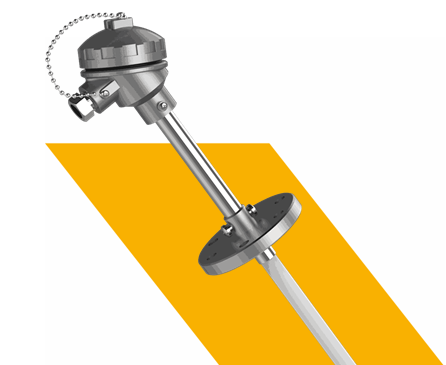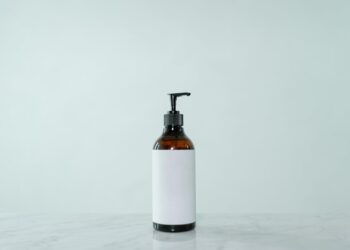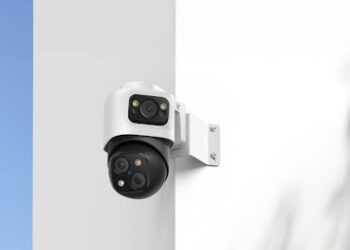Temperature measurement is found in almost all industries and scientific applications for operational efficiency, safety, and product quality. Among all temperature-measuring devices used, thermocouples have superiority because of flexibility, ruggedness, and large temperature resistance. In this article, we detail thermocouples as well as explain in detail how they work, types, applications, and factors for selection.
Understanding Thermocouples
A temperature sensor based on a thermocouple consists of two different metal wires which are connected at one point to create a measurement junction. The reference junction of this two-wire system creates electrical potential when a temperature variance emerges between itself and the reference wire endpoints through Seebeck effect. The produced voltage shows a direct relationship with temperature variations that enables users to identify the measurement point’s temperature value.
The Seebeck effect – The Basic Principle
Seebeck effect was discovered in 1821 by Thomas Johann Seebeck, in which an electromotive force (voltage) is produced in a circuit comprising two different metals when the junctions are at different temperatures.A voltage is created because of diffusion of charge carriers (electrons or holes) within the metals because of thermal gradient In thermocouples, this is used in measuring temperature difference.
Basic Types of Thermocouples
Thermocouples consist of different thermocouple types based on metal combination used, each of which has different features for different applications:
- Type K (Chromel-Alumel): This thermocouple stands out due to its diverse application range so it finds wide usage in various fields. This substance functions within oxidising conditions at temperatures ranging from -200°C to 1350°C.
- Type J (Constantan-Iron): Vacuum and reducing inert conditions offer suitable utilization for this material with a temperature range spanning from 0°C to 760°C. The oxidization process of iron material reduces high-temperature applications for these materials.
- Type T (Constantan-Copper): Under humid conditions and in cryogenic applications, Type T functions well at temperatures from -200°C to 350°C.
- Type E (Chromel-Constantan): Due to its high output and stability, Type E is utilized for cryogenic temperatures and can operate at -270°C to +740°C.
- Type N (Nicrosil-Nisil): Created to overcome weaknesses in Type K, Type N has better stability and oxidation resistance, ideal for use from -270°C to +1300°C.
- Type B, R, and S (Platinum-Rhodium Alloys): The thermocouples exhibit high precision and stability at 1600°C temperature applications. The price and sensitivity of these thermocouples remain lower than that of base metal thermocouples.
Applications of Thermocouples
Thermocouples are utilized in industry due to their consistency and wide temperature span.
- Industrial Manufacturing: In industrial manufacturing settings this tool helps control high temperatures during the metal heat treatment, glass production and cement manufacturing processes.
- Power Generation: Turbine and boiler temperature monitoring which enables safe operation and helps prevent boilers from overheating occurs through their use.
- Aerospace industry: Manufacturers in the aerospace sector utilize the devices to check extreme temperatures during machine testing and environmental chamber operations for material performance evaluation under pressure conditions.
- Food industry: Legal requirements for food production demand industrial personnel to monitor cooking and preservation procedures for product safety and quality maintenance.
- Medical Application: Medical equipment including hypodermic probes utilizes it for patient temperature monitoring as well as laboratory equipment applications.
Advantages of thermocouples
There are quite a few positives for thermocouples for which they represent the best choice for use in temperature measuring functions.
- Temperature Range: Different types of thermocouples allow temperature measurement in both low-temperature conditions and up to 3000°C ranges.
- Durability: Different types of thermocouples allow temperature measurement in both low-temperature conditions and up to 3000°C ranges.
- Fast Response Time: Due to low thermal mass and compact size, thermocouples possess fast response time.
- Self-Powered: Generate their own voltage without the need for an external power source.
- Cost-Effective: Low in cost when compared to other temperature sensors, e.g., RTDs (Resistance Temperature Detectors) or thermistors.
Factors Influencing Thermocouple Selection
Choosing the appropriate thermocouple type for a specific application involves considering several factors:
- Temperature Range: The selection of thermocouples requires checking their operation compatibility with planned operating temperature range.
- Environmental Factors: Operation and lifespan are affected by water exposure and pressure changes together with vibration and exposure to corrosive substances.
- Accuracy Requirements: Files should choose thermocouples that provide the accuracy level required by their processing needs.
- Response Time: Thermocouples providing fast response times suit applications that need urgent temperature reading measurements.
- Compatibility with Instrumentation: A thermocouple should be compatible with all existing measurement and control instruments that need to integrate with it.
Endnote
Thermocouples from Tempsens prove to be highly suitable temperature-measuring devices because of their versatility for different purposes, ruggedness, and broad working range. Knowledge of right operation, selection of right types for applications, and right setup and maintenance practice should be followed for optimum utilization. Proper fault rectification at initial stage and periodic calibration ensure reliability and accuracy to thermocouples, which become part and parcel of different industry and scientific equipment.







